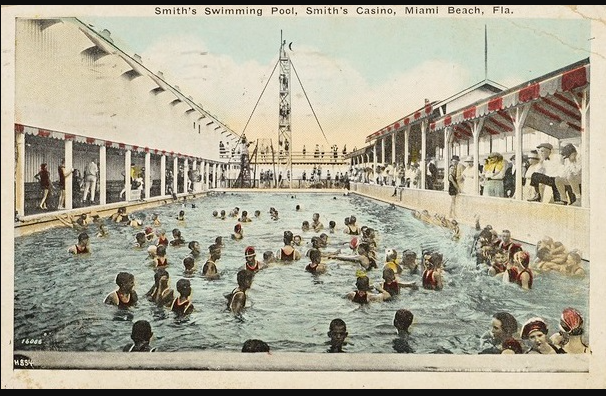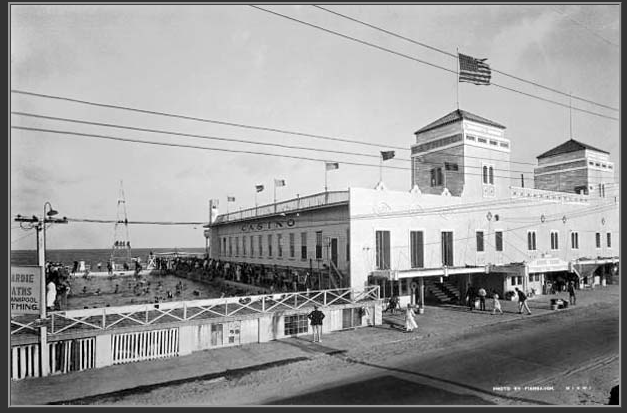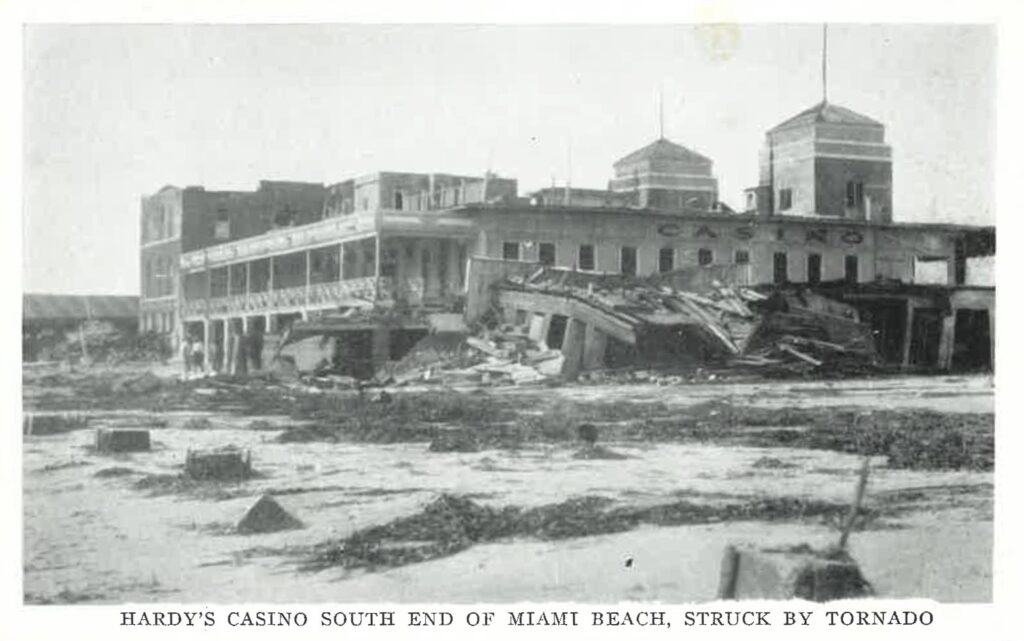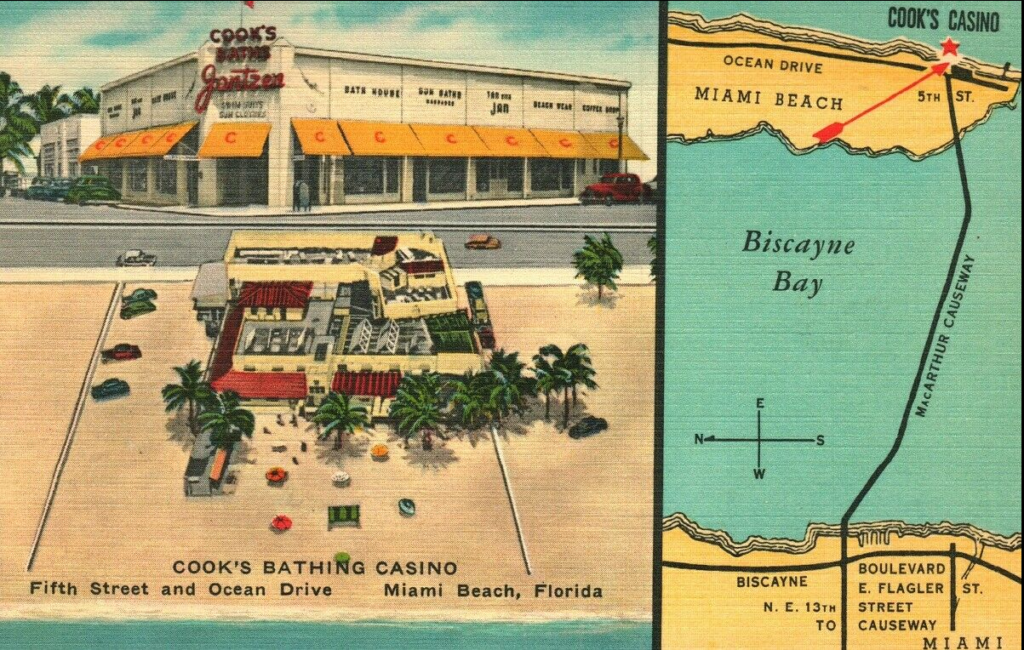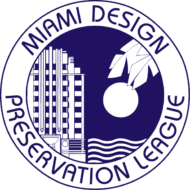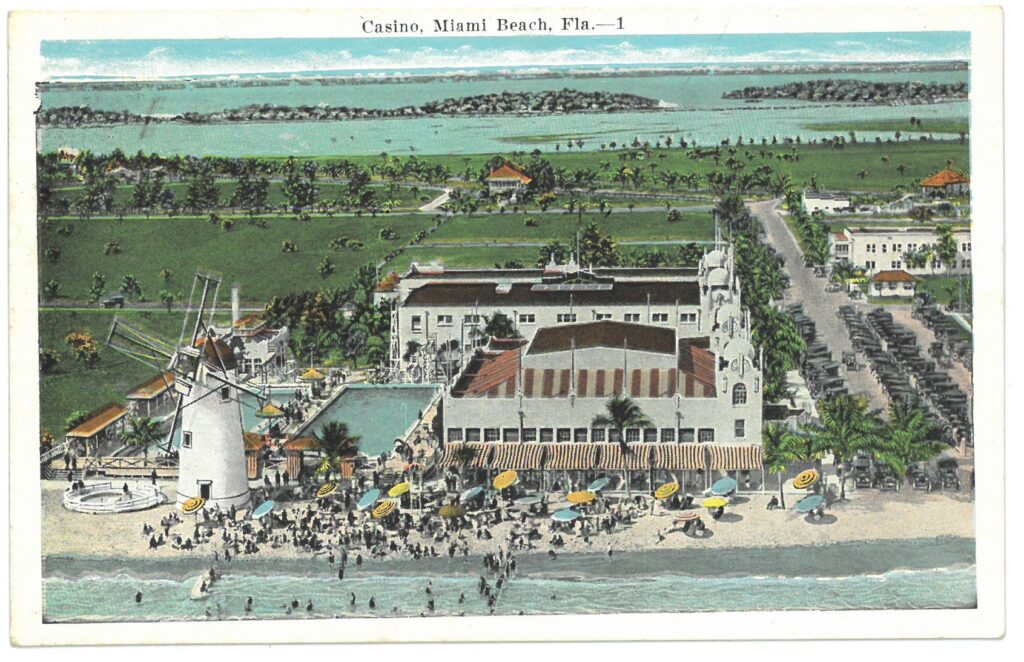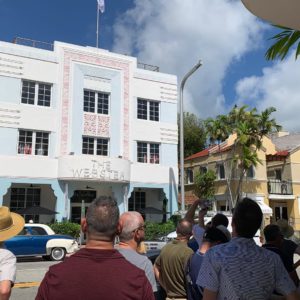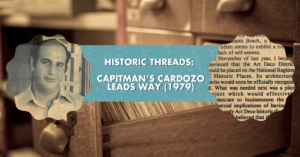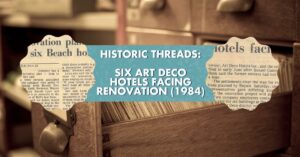Miami Beach sunbathers in the early 20th century would flock to Casinos, which actually were “bathing pavilions” that had nothing to do with gambling. The first bathing casino was built by Dick Smith in 1901 on 1st Street on the beach and was called the Ocean Beach Casino. It had a high pyramidal roof, the sides were open and there were no amenities. In 1909, this location was bought out by Avery C. Smith and re-named Smith’s Casino. At the time it opened, it was re-built as a two-story wooden structure with changing rooms, a small dance floor and a refreshment stand. By 1912, Smith was running his own ferry service to his bathhouse from across the bay. An alternate way to get across the bay was John Collin’s new bridge, that opened on June 12, 1913. The Collins Bridge was later replaced by the Venetian Causeway in 1925.
In April 1913, Dan Hardie, Dade County’s sheriff, opened a bathhouse one block north of Smith’s, equipped with a restaurant, calling it Hardie’s Casino. By 1918, both casinos had added swimming pools, filled with seawater. By 1920, Hardie’s expanded and got a new distinctive look with two square towers with peaked tile roofs, complementing the Smith Casino pyramid. Unfortunately, The Great Hurricane of 1926 completely devastated this beach resort.
Located north of Hardie’s Casino and built in 1926, was Cook’s Casino at 5th Street. Early photographs of Cook’s show a more modest version compared to the larger casinos. William Francis Brown, who also built the Boulevard Hotel, was most likely the architect. It appears that the club had a small fast food restaurant. Additionally, they sold sundries, sun tan oils, sunglasses, bathing suits and local souvenirs. Cook’s Casino would long outlast all the other casinos, which were either closed, burned down or demolished, continuing to operate until sometime into the late 1950s.
The most famous of the bathing casinos was originally named the Everglades Cabana Club. It was built in 1920 by John Collins and Russell Pancoast. Located between 22nd and 23rd Streets on Collins Avenue, it was just south of the Roney Plaza. Admission was a nickel and bathing suits could be rented for a quarter. Later bought and expanded by Carl Fisher, it was renamed the Roman Pools and became a major entertainment venue. He added showrooms, night clubs, fine dining, dancing, a coffee shop and store fronts. As one of the most popular attractions on Miami Beach, it also had two Dutch windmills both supplying fresh salt water into two large swimming pools. Diving and swimming exhibitions happening there, always attracting very large crowds. Sometime in the late 1940’s, it was renamed the Everglades Cabana Club again. Surviving several hurricanes, the casino was open for business until the early 1950s. The windmill remained standing until the building’s demolition in the early-1960s, following a fire.
